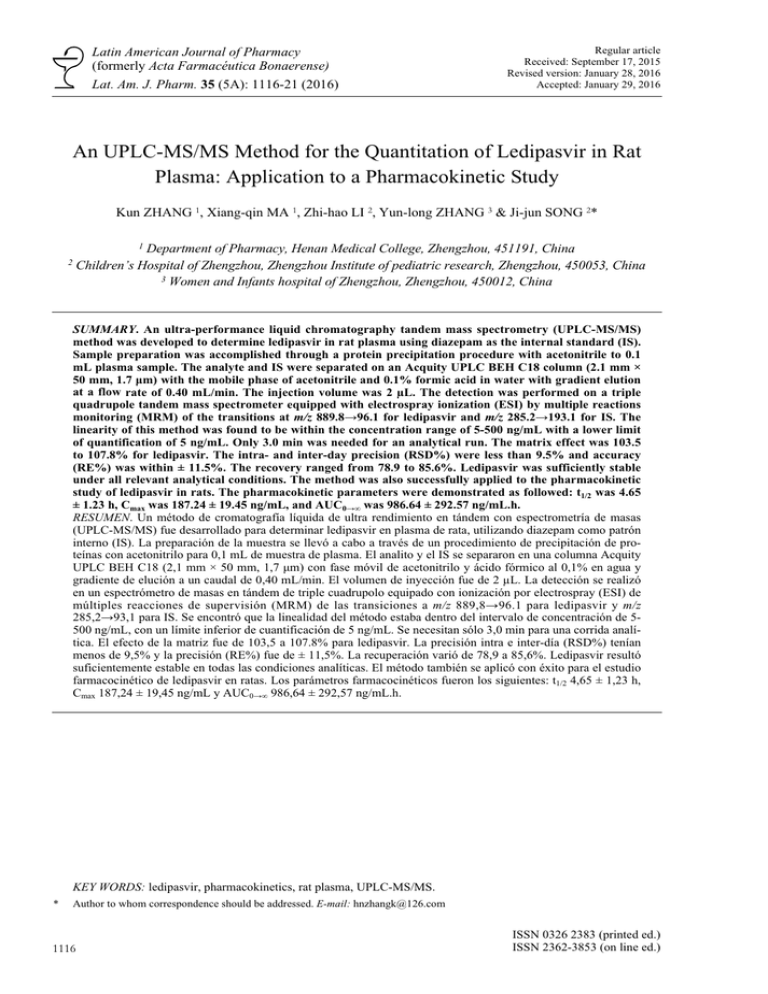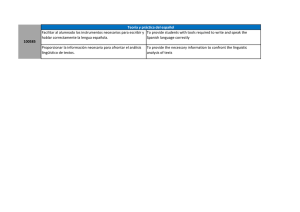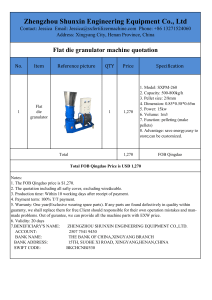An UPLC-MS/MS Method for the Quantitation of Ledipasvir in Rat
Anuncio

Latin American Journal of Pharmacy (formerly Acta Farmacéutica Bonaerense) Lat. Am. J. Pharm. 35 (5A): 1116-21 (2016) Regular article Received: September 17, 2015 Revised version: January 28, 2016 Accepted: January 29, 2016 An UPLC-MS/MS Method for the Quantitation of Ledipasvir in Rat Plasma: Application to a Pharmacokinetic Study Kun ZHANG 1, Xiang-qin MA 1, Zhi-hao LI 2, Yun-long ZHANG 3 & Ji-jun SONG 2* 2 Department of Pharmacy, Henan Medical College, Zhengzhou, 451191, China Children’s Hospital of Zhengzhou, Zhengzhou Institute of pediatric research, Zhengzhou, 450053, China 3 Women and Infants hospital of Zhengzhou, Zhengzhou, 450012, China 1 SUMMARY. An ultra-performance liquid chromatography tandem mass spectrometry (UPLC-MS/MS) method was developed to determine ledipasvir in rat plasma using diazepam as the internal standard (IS). Sample preparation was accomplished through a protein precipitation procedure with acetonitrile to 0.1 mL plasma sample. The analyte and IS were separated on an Acquity UPLC BEH C18 column (2.1 mm × 50 mm, 1.7 μm) with the mobile phase of acetonitrile and 0.1% formic acid in water with gradient elution at a flow rate of 0.40 mL/min. The injection volume was 2 µL. The detection was performed on a triple quadrupole tandem mass spectrometer equipped with electrospray ionization (ESI) by multiple reactions monitoring (MRM) of the transitions at m/z 889.8→96.1 for ledipasvir and m/z 285.2→193.1 for IS. The linearity of this method was found to be within the concentration range of 5-500 ng/mL with a lower limit of quantification of 5 ng/mL. Only 3.0 min was needed for an analytical run. The matrix effect was 103.5 to 107.8% for ledipasvir. The intra- and inter-day precision (RSD%) were less than 9.5% and accuracy (RE%) was within ± 11.5%. The recovery ranged from 78.9 to 85.6%. Ledipasvir was sufficiently stable under all relevant analytical conditions. The method was also successfully applied to the pharmacokinetic study of ledipasvir in rats. The pharmacokinetic parameters were demonstrated as followed: t1/2 was 4.65 ± 1.23 h, Cmax was 187.24 ± 19.45 ng/mL, and AUC0→∞ was 986.64 ± 292.57 ng/mL.h. RESUMEN. Un método de cromatografía líquida de ultra rendimiento en tándem con espectrometría de masas (UPLC-MS/MS) fue desarrollado para determinar ledipasvir en plasma de rata, utilizando diazepam como patrón interno (IS). La preparación de la muestra se llevó a cabo a través de un procedimiento de precipitación de proteínas con acetonitrilo para 0,1 mL de muestra de plasma. El analito y el IS se separaron en una columna Acquity UPLC BEH C18 (2,1 mm × 50 mm, 1,7 μm) con fase móvil de acetonitrilo y ácido fórmico al 0,1% en agua y gradiente de elución a un caudal de 0,40 mL/min. El volumen de inyección fue de 2 µL. La detección se realizó en un espectrómetro de masas en tándem de triple cuadrupolo equipado con ionización por electrospray (ESI) de múltiples reacciones de supervisión (MRM) de las transiciones a m/z 889,8→96.1 para ledipasvir y m/z 285,2→93,1 para IS. Se encontró que la linealidad del método estaba dentro del intervalo de concentración de 5500 ng/mL, con un límite inferior de cuantificación de 5 ng/mL. Se necesitan sólo 3,0 min para una corrida analítica. El efecto de la matriz fue de 103,5 a 107.8% para ledipasvir. La precisión intra e inter-día (RSD%) tenían menos de 9,5% y la precisión (RE%) fue de ± 11,5%. La recuperación varió de 78,9 a 85,6%. Ledipasvir resultó suficientemente estable en todas las condiciones analíticas. El método también se aplicó con éxito para el estudio farmacocinético de ledipasvir en ratas. Los parámetros farmacocinéticos fueron los siguientes: t1/2 4,65 ± 1,23 h, Cmax 187,24 ± 19,45 ng/mL y AUC0→∞ 986,64 ± 292,57 ng/mL.h. * KEY WORDS: ledipasvir, pharmacokinetics, rat plasma, UPLC-MS/MS. Author to whom correspondence should be addressed. E-mail: hnzhangk@126.com 1116 ISSN 0326 2383 (printed ed.) ISSN 2362-3853 (on line ed.)








